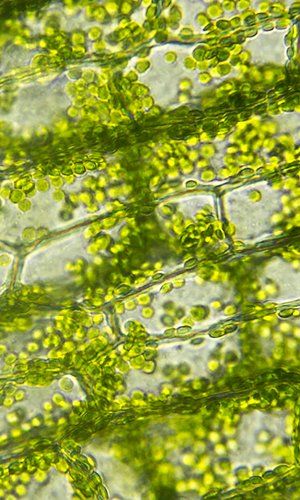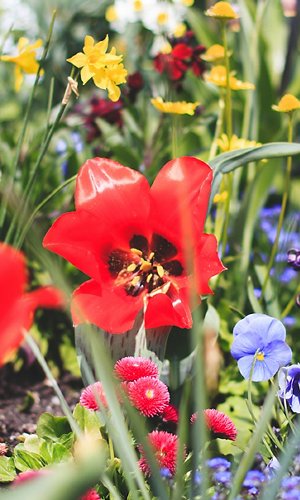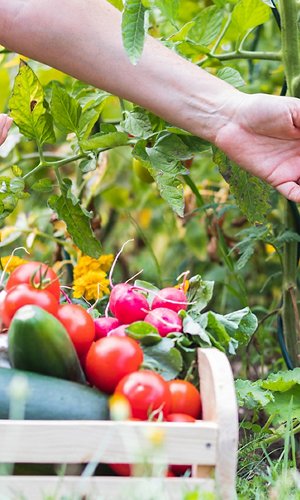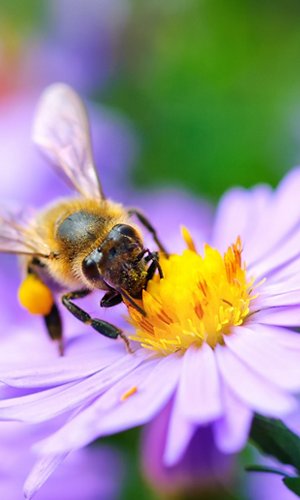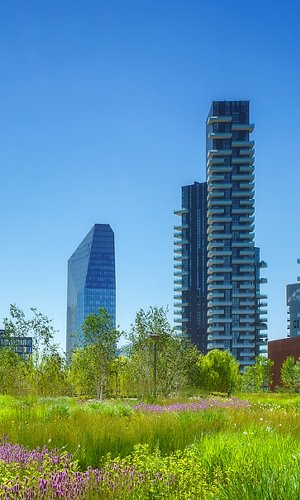Botanists, who are scientists who study plants, have identified and described over 3,500 types of plants, but there are many more! Plants have different shapes and sizes, some are so small they can only be seen with a microscope, while others are so tall that it is hardly possible to identify their foliage; many have very colourful flowers others do not have any. There is such a large variety of plants because they live in different environments of the Earth: in the water, in thick forests or wide plains, in cold climates or blazing deserts. Since millions of years they have had to and have known how to adapt to their environment. Plants provide much of the oxygen that animals and humans breathe, and a large part of the food they eat.
Voice search
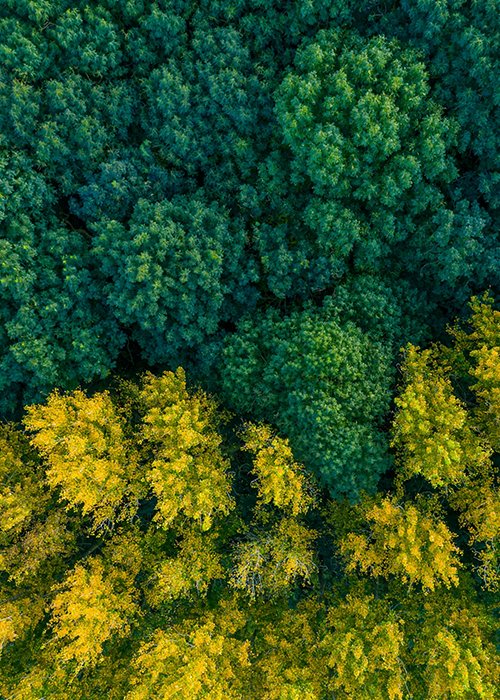
Algae are plant organisms that carry out photosynthesis but which, unlike plants, have a poorly differentiated body, or thallus, and very simple reproductive organs. Due to the absence of roots and vessels, absorption of nutrients and gas-exchange take place on the entire surface of the algae. Algae reproduce in two different ways, like all the other plant organisms, by both sexual and asexual reproduction. In asexual reproduction, a production of cells that develop from one organism and give rise to a new organism, is observed. In the case of sexual reproduction, instead, a fusion of female and male gametes takes place. From this union an organism that is similar to the parents, but which has intermediate genetic characteristics of the two parents is originated, and therefore it is not identical to one of them as in the case of asexual reproduction. Algae are generally subdivided, according to the type of chlorophyll and pigments that are present, into Green, Brown and Red Algae.
Green algae. Green algae are characterized by a brilliant green colour and there are approximately 7000 species. Their structure is extremely varied, some consist of a single cell and some have a very differentiated thallus. Due to the presence of chlorophyll, they are usually present in the more illuminated surface areas, where they can receive red radiations that disappear in the deeper waters. However, the alga which has been found in the deepest water is in fact a green alga, Halimeda copiosa, the tropical equivalent of “alga moneta” (Halimeda tuna) of the Mediterranean Sea. Green algae have a high calcium content and their “skeleton” forms thin fragments which are the most common sediment in most reefs.
Brown algae. There are approximately 1500 species of brown algae and they are almost exclusively marine plants. They are coloured brown, yellow or golden, due to the presence of pigments that differ from chlorophyll, the carotenoids. At times the thallus is covered with a thin film of calcium carbonate that gives the algae a characteristic whitish colouring. Among the brown algae we wish to point out the Padina boergesenii of the Caribbean which forms tufts of fan-like leaf lamina. The striped colours vary from yellow to green and brown with brilliant iridescent blue-green colouring, and the upper margin is often lighter.
Red algae. Red algae are a group of algae with a particular cell pigment, phycoerythrin which gives them their red colouring. There are approximately 4000 species, and they are particularly abundant in warm and temperate water. Due to the presence of this pigment they can carry out photosynthesis even at great depths, however they do not disdain areas closer to the surface, where it is easy to see species like the Peyssonnelia squamaria.
Related topic
Bryophyta
Short after the emerged lands were conquered, plants were classed into: bryophyta, that include hepatics, anthocerote and mosses and vascular plants, i.e. all higher plants. The structure of bryophyta is very simple and it is made up of individuals that are generally shorter than 20 cm. Bryophyta do not have roots, but they have rhizoids, i.e. long cells or cell filaments, that stick to the substrate.
Ferns
These plants have big leaves, called fronds, they do not produce seeds and they generally need water to fertilize. For this reason they are generally found in humid and shady forests and in marshes.
On the underside of sporophyte leaves, circular shaped organs called sori, containing spores, can easily be seen . They can be of the same size or of different sizes (microspores and macrospores) and when they germinate they can give rise to different gametophytes (male and female gametophytes).
Spermatophytes
Spermatophytes are divided into gymnosperms and angiosperms. The name Angiosperms comes from the Greek words: angeion, “vase”, and sperm, “seeds”. This name means that the seeds of these plants are not “naked”, but encased in a specific structure, the ovary, that protects them from the external environment. The differences between Angiosperms and Gymnosperms are generally very clear. The most important ones are: the Angiosperms include many woods or shrub species as well as many herbaceous species (unlike Gymnosperms)…
Angiosperms
Angiosperms include approximately 220,000 species (over one half of the known higher plants) and their classification is very complex and detailed and not perfectly defined yet. Angiosperms can be divided into two large groups: dicotyledons and monocotyledons. The features that distinguish Dicotyledons from Monocotyledons are generally quite clear and peculiar. The most important discriminating parameter is the number of cotyledons contained in the embryo: Dicotyledons own two cotyledons only (rarely 1, 3 or 4), while Monocotyledons own only one (or sometimes none at all).
Gymnosperms
Gymnosperms include around 750 species. Among gymnosperms we find the tallest trees on Earth, like for example sequoia that can reach up to 100 metre height. Among gymnosperms we also find coniferae (this word means “cone-carrier”). Among them, we find pines, fir trees, larches, cedars of Lebanon, cypress and juniper. Most of conifers are ever-green plants, with needle-shaped or squama-shaped leaves.
Photosynthesis
All living beings are largely composed of organic molecules (sugars, fats, proteins, etc.), that are produced from other molecules (synthesis). Plants are however different from animals, since they use different molecules in the process. Actually, green plants produce the organic substances their body is made of by using a limited number of inorganic substances that can be found in the environment, such as carbon dioxide (contained in air) and water and some inorganic ions (nitrates, sulphates, and other substances contained in soil).
Still but vital
If we look at the way plants feed themselves, we can understand the reason of the specific distinguishing features of this kingdom. Plants are actually motionless, often cover large areas, both in the air (with their branches and leaves) and underground (with their roots), sometimes have no specific growth limit and are very adaptable to external stimuli.
Adjustment of the Earth’s climate
Vegetation strongly affects the Earth’s climate and the composition of the atmosphere through the photosynthesis activity. Through this process, plants absorb carbon dioxide (CO2) from the atmosphere, trap carbon (C) to build organic molecules and release oxygen (O). Due to the extension of vegetation on Earth, the amounts of oxygen and carbon dioxide that get into this process are huge: every year, the plants’ photosynthesis releases approximately 70 billion tons of oxygen and consumes an equally huge amount of carbon dioxide.
Plants as energy source
At present, a large part of man’s energy requirements is covered by products of vegetal origin. Fossil fuels (coal, oil, natural gas) have formed from the partial decomposition of organisms – mainly vegetal – that lived over one hundred million years ago (see the Section on ENERGY). When petrol burns in a car engine or methane burns in the kitchen stove, some of the solar energy trapped by the plants in distant times through photosynthesis is released.
World plants
The main factors that affect the spreading of a vegetal species are climatic conditions (especially sun exposure, temperature and availability of water) and the characteristics of the soil. The impact of the other living organisms that inhabit the same ecosystem (herbivores, insects, other vegetal species, etc.) should not be underestimated either. But an analysis of the factors above is not sufficient to account for all the reasons why a species inhabits a given place and not another, similar one.
Life pioneers
Palaeontology is the science that studies the ancient living beings, their origin and evolution. This study requires the examination of the animal and vegetal remains that lived in the past and that we find today as fossils inside sedimentary rocks. Primordial organisms had very simple and small shapes, so they could not turn into fossil remains. The most ancient fossils to have been found so far date back to approximately 3 billion years ago. How have the first living organisms originated?
A history lasting millions of years
The history of the Earth is divided into five ages: Archaeozoic or Precambrian, Palaeozoic or Primary, Mesozoic or Secondary, Cainozoic or Tertiary, Neozoic or Quaternary. Archaeozoic age. The Archaeozoic age is the longest one: it began 4.6 billion years ago and ended 530 million years ago. 3-billion-year-old fossils prove that the oldest organisms known so far are very simple, heterotrophic unicellular algae. Some green-blue autotrophic algae appeared, however, approximately two billion years; they could produce the nutrients they needed by themselves, through the photosynthesis…
Read more...
Plants are essential food for all living organisms, including man, to survive. In the Ecosystems section, we saw they are the basis of the food pyramid. Farming began 7-8,000 years ago, when men stopped living a nomadic life, began to live in stable communities, and started to produce food by selecting the plants that were fittest for periodical sowing and harvesting.
During the last century, the farming techniques have developed so much as to increase crops by almost five times. The increase in the availability of food has been, however, very different in the different countries and regions of the world. In developing countries, over 800 million people still suffer from hunger or malnutrition, while in industrialised countries more and more people are overeating or overweight. In both cases, this food imbalance negatively affects both human health and productivity. In fact, natural products have maintained their market share and are expected to even increase it over the next few decades. These products have the great advantage of being renewable: unlike modern plastics and man-made fibres, which are produced from non-renewable resources (oil, coal), they are not bound to disappear. A cotton plantation grows all over again every year, as well as a forest can renew itself, though more slowly, after the trees have been cut.
Related topic
Agricultural development
The flora is an essential asset for man, since it is a renewable resource and a source of basic products for the agricultural world and for several industrial and commercial sectors. As for many other resources, though, to be able to exploit them as efficiently as he could, man had to apply work and technology to plants and lands. The result was the development of farming. The basic role of farming is to produce more and more food and raw materials (wood and fibres).
Herbs and medicine
Herb-based medicine (phytotherapy) is the oldest and most natural treatment for the body. It involves the use of plants or parts of plants fit to treat specific ailments. Even now, all over the world, most drugs are made of vegetal substances and many synthetic products are prepared by reproducing in the laboratory environment the active agents contained in plants. The last few years have seen the spreading of “flower therapy” for the treatment of stress, eating disorders, anxiety and sleeplessness.
Natural and synthetic fibres
Plants are for man a source of important raw materials: textile fibres, cellulose (to make paper) and wood. Thirty years ago, the experts were convinced such resources would disappear, since they would not have been able to withstand competition from man-made materials. In fact, natural products have maintained their market share and are expected to even increase it over the next few decades. These products have the great advantage of being renewable: unlike modern plastics and man-made fibres, which are produced from non-renewable resources (oil, coal), they are not bound to disappear.
Deforestation
Farming also means exploitation of forests. There are many reasons for deforestation: timber trade, exploitation of ore deposits, urbanisation and use of land as farmland or pasture. Unfortunately, for many poor countries, high-quality wood from the forests is one of the few assets available to develop their economy. And often we see indiscriminate deforestation being carried out, which causes huge damages to the environment and to mankind. For a sustainable use of the forestry resources, all the advantages and drawbacks should at least be assessed before pulling down a forest.
Destructive fires
Along with deforestation for the use of wood by man, fires are one of the biggest causes of the disappearance of the forestry. The reasons of these fires are mainly arson (wilful fires), negligence (wilful fires) and natural factors (lightning and others). The rate at which a wood burns depends on many factors: the type of undergrowth, the flammability and combustion speed of the wooden biomass of the wood, the climatic conditions (for instance, in our country, as well as in all the Mediterranean countries, the summer season is the one most at risk), and others.
The death of forests
Man can damage forests either directly, through deforestation and fires, or indirectly, through some of his productive activities. Depletion is actually a crisis event of forest environments in temperate areas, whose causes are due to atmospheric pollution, especially the effect of acid rains, the removal or degradation of the woodland due to the uncontrolled development of tourist activities.
Preserving forests
The awareness of the importance of protecting the flora, the numerous and complex plant world, has grown over the last century. In particular, man has understood that vegetal biodiversity (i.e. the differences existing among the many vegetal species) is probably one of the greatest resources that mankind has been given by nature. So far, the scientists have classed over 250 thousand species of moss, ferns, conifers and blooming plants.
Read more...
In the light of the current food crisis, to increase agricultural productivity on a global scale, it’s possible to expand total cultivated land, but the areas which are currently available are less and less: in Asia, for example, arable land is already all employed. In any case, the extension of arable land would allow for an increase of agricultural production by only 20% and would cause a more substantial environmental impact of the use of natural resources. As an alternative, it would be possible to intensify production itself, introducing even more invasive techniques than those currently adopted but this would lead to an increase in production which wouldn’t be higher than 10%. The most substantial contribution to the increase in the availability of agricultural products, instead, seems to come from the improvement of biotechnologies which would determine a 70% increase in global agricultural production.
Biotechnologies, as defined by the Convention on Biological Diversity in 1992, don’t concern only Genetically Modified Organisms (GMOs) but to a range of products as vaccines, improved varieties, micopropagated plants (virus-free). Application of technologies to agriculture must aim to resolve famine and poverty problems in developing countries, allowing to increase the production of local small farmers and must conform to strict criteria related to biosecurity, that is men’s health, biodiversity preservation and ecological sustainability. Brazil, India and China, the countries with greatest population growth, are currently achieving cutting edge results in the field of agricultural biotechnologies. Among developing countries (DCs), instead, 23 countries are capable of applying biotechnologies through development projects; 14 develop and apply some biotechnologies. Thanks to the introduction of varieties of cultivations which give high returns, chemical products and new irrigation techniques, the so-called “green revolution” in the ‘60s and ‘70s has increased crops yields and has helped millions of people to fight famine and poverty. Today, though, many small farmers can’t move beyond subsistence agriculture and every day more than 854 million people, according to the latest FAO estimates, don’t have enough to eat. Billions of people suffer of trace elements deficiencies, a form of insidious malnutrition caused by unbalanced nutrition. And in the following thirty years there will be two billion people in the world which will need to be fed –whereas natural resources on which agriculture depends become more and more frail.
Related topic
For or against GMOs
The use of biotechnologies in agriculture, the “genetic revolution”, can answer these problems? There are two schools of thought addressing this issue which, in the last decades, have been holding discussions over this topic at a global level. Man-made “genetic modification” dates back to ancient times and can probably be led back to when our ancestors started using micro-organisms to make bread, wine and cheese.
GMOs against famine
FAO, the United Nations organization for food and agriculture, highlights the need to ensure that potential benefits of biotechnology applied to agriculture are shared among everybody and not only some chosen people. Farmers and poor consumers in developing countries could gain great benefits; so far, though, except in a few cases, with regards to the development of the “biotech” sector problems of poor seem to be ignored in favour of multinational companies.
Patenting of living organisms
In many countries the law allows to patent GM seeds thus transforming them in a product owned by a company. Companies which sell “GMO-pesticide” to farmers gain profits in three different stages: selling pesticides, selling transgenic crops resistant to pesticides and applying patent royalties, which causes an extra charge in comparison to traditional seeds.
Read more...
Sustainable agriculture was established in response to environmental problems caused by the “green revolution” and other production methods having high environmental impacts (intense use of water, pesticides and chemical fertilizers). The world movement in support of sustainable agriculture has been defined “the true green revolution” precisely to highlight the contrast between these two production methods. Farming sustainably means promoting biodiversity, preserving the environment, preferring local productions, ensuring the respect of human rights of workers, safeguarding communities and guaranteeing economical sustainability of the agricultural system without leaving small farmers behind. One of the solutions adopted to control environmental impacts of modern agricultural production and thus to make agriculture more sustainable is the return to traditional methods of crop growing used in the past as, for example, biological agriculture or conservation agriculture. At the same time, the merge between traditional knowledge and new philosophies, from a sustainable perspective, has given birth to new techniques as integrated agriculture and biodynamic agriculture.
Related topic
Biological agriculture
Various methods of sustainable farming can be undertaken, and organic farming is one of them: it’s a production method defined and disciplined by the common CEE 2092/91 Regulation and, at an international level, by the International Federation of Organic Agriculture Movements – IFOAM. The organic production method respects the environment as it doesn’t resort to synthetic chemical products, as pesticides and fertilizers, but on the contrary, uses products of natural origin against parasites (sulphur, copper, plant extracts) and uses natural compost to fertilize soil.
Integrated agriculture
Integrated agriculture aims to guarantee the smallest environmental impact as possible, preserve biodiversity and reduce risks for the health of agricultural workers and consumers, minimizing the use of synthetic chemical substances (as pesticides and fertilizers) and favouring, as an alternative, natural products. This type of agriculture employs a system of integrated fight that envisages the use of various instruments wisely mixed to fight parasite attacks.
Conservation agriculture
Conservation agriculture consists in a set of agronomic practices allowing better soil management, limiting negative effects over its composition and structure, content of its organic matter and erosion process and resulting degradation. Conservation agriculture is characterised by some techniques as, for example, direct seeding in soil that hasn’t been ploughed or has been ploughed the least possible and avoiding burning crop residues or ploughing them in the soil.
Biodynamic agriculture
Biodynamic agriculture is inspired by R. Steiner’s “anthroposophy” and is based on the premise that a farming company is truly an independent living organism inserted in a bigger living cosmic organism that influences it. Cosmic rhythms influence planting calendars, growing and gathering. The more employed techniques are crop rotation, biodynamic preparations, composting, non-destructive soil ploughing and quality fertilizing through the use of “green manures” and biodynamic compost fertilizing.

